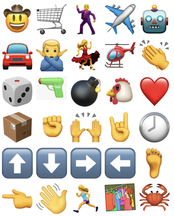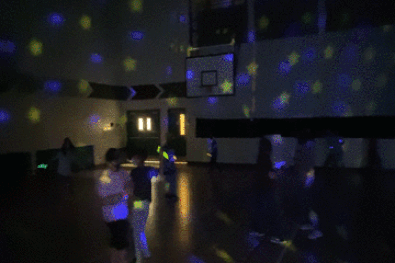|
Is there any activity in Physical Education more polarizing than dance? In my experience, it is the one activity that is as likely to be greeted by cheers as it is groans. At the end of a unit, students inevitably ask what unit is coming up next. When I told them that "next week, we will be dancing" the student responses followed an interesting, almost linear trend. In Grade 1 & 2, there was nearly unanimous excitement. In Grade 3, most students were excited while a much smaller portion seemed less enthused. However, in Grade 4 & 5, there was outright objection to dancing, as well as students who were eager to start right away. Certainly there are many factors that may influence one's attitude toward dance, or any activity. However, I was none the less interested in why there was such a major shift in student attitudes towards dance as they aged. While acknowledging that this may be simply a matter of chance, that the unique perceptions and experiences of each student in these classes just happened to result in what I viewed as a somewhat linear polarization of attitudes towards dance over time. Perhaps this pattern of changing perceptions is natural and would be observable in all activities, not just dance (dance just happened to be the first unit I've done at the same time across multiple grade levels).
My initial hypothesis was related to meaningful experience; that students in Grade 1-2 had no yet acquired enough experiences in dance (positive or otherwise), that the prospect still feels novel and exciting. Whereas the older Grade 4-5 students had perhaps accumulated enough experiences in dance, that in the case of the "anti-dancers" had been meaningless or detrimental. In a conversation with @ImSporticus he reminded me that students often become aware of their participation in comparison to others later in childhood. Perhaps the students in Grade 1-2 simply enjoy dancing because they perceive they are just as competent as their peers as long as they are trying hard. Whereas in Grade 4-5, as students begin to understand themselves in relation to others, students begin to realize that perhaps they are not as competent as their peers (despite their effort), and thus may deter a willingness to engage. . Another theory is related identity formation. I've noticed during informal conversations with students, that students in Grade 4-5 often identify or describe each other based on an activity. For example, students often says " Student X is the parkour kid in the class" or the "gymnast" or the "artist". While very few students in Grade 3, and none in Grade 1 and 2 ever speak in those terms (to me at least). Are there ways that students identify themselves that are anti- or in opposition of an identity associated with dance? To the point, alongside the curricular outcomes associated with these grade levels, what I aimed to do was: 1. Understand through a lens of meaningful physical education (MPE), why/how students had formed negative attitudes towards dance? If you're unfamiliar with the features of MPE. They h are below, as outlined by Beni et al (2017).
3. Do No Harm. Having followed some of the work of @coachnateb on Twitter, what I did not want to do, was further harm the relationship between students and dance. I did not want to 'force' a student to participate by leveraging their grade or any other form of threat such as calling parents. I wanted them to choose to participate on their own. In the Beginning At the beginning of the unit, I used the results of a survey to group students who had negative attitudes towards dance with those who had more positive perceptions for a small group discussion during which students shared what they respectively liked or disliked about dance. A reporter from the group shared out to the larger class. The opportunity to express themselves, the non-competitive environment and its uplifting nature were reasons cited for enjoying dance by the dance lovers. As this post is focused on engaging reluctant dancers, below is the list of responses as to why students did not like dance. In the sub-bullet, is a potential explanation related to the features of MPE in support of these statements.
Based on the information provided by students, I would take the following actions to attempt to address the reasons why students may dislike dance with the intent of creating a connection that would motivate students to dance. In reality, the strategies presented below were far more 'messy' during the unit. 1. Provocation - I still remember watching Andy Vasily's (@andyvasily) keynote during the first APPEC (now PHASE) conference in Hong Kong. Using the powerful story of Team Hoyt as an example, Andy shared an inspiring talk on the importance of emotionally engaging hooks to learning. If MPE is about emotional connection, this seemed like a strategy worth investing in. The video we watched was of the "Dancing Guy" who has appeared on numerous videos
2. Choreographed dance would involve group steps (during the chorus) and free dance during the verse.
Eventually we started building towards our final 'Dance Party' where I wanted to emphasize the following... 5. Personally relevant music would be selected

6. Students would have the opportunity to create their own dances
The Final Dance Party: As mentioned, I wanted the dance environment to represent one they are likely to encounter in their post-COVID future. Even if a student didn't love dance, I wanted them to be excited about attending the event. In addition to the previously mentioned disco ball, Amazon also had cheap glow sticks, with each student receiving one. During this dance party we played the songs we had learned choreographed dance moves to throughout the unit, as well as pre-mixed songs of their choosing. 
This GIF was a big win. The student in the light pants who you see dancing/spinning around was one of my most reluctant dancers at the beginning of the unit. When creating his own dance to a clip of Eminem's - Lose Yourself, he said to me in private "I used to hate dance, but now I love it" ...you can't make this stuff up!
However, I can't claim that the strategies or approach I took were 100% successful. We did frame success as being personal for each individual. Success could be taking a risk, being brave or continuing to further their love and passion for dance. For the reluctant dancers, many took a risk and chose to dance, often with encouragement from a friend. While others would do so periodically depending on the song. Anecdotally, our Admin Assistant popped in to look through the gym doors and noted that she was impressed that so many students were dancing, citing the previous reluctance of some specific students. However, there was also one boy in Grade 5 that I couldn't get to engage, I couldn't negotiate with him, couldn't get him to dance to his favorite song and his reflection revealed little as to why he was so opposed to dancing. He helped record and give feedback, but wasn't interested in dancing himself. I chose not to pressure him into trying, and am comfortable in saying that at the very least - no further harm to his perception of dance was done.
Student Reflection: At the end of the unit, students completed a "2 Stars, and 1 Wish" reflection, in which they identified two things they liked, and one thing they wished would have been different / included next time. Below is a summary of responses. There was likely some recency bias here, as the glow-stick/dance party was still fresh in their mind. Liked (Stars)
Overall, for my first time teaching dance to ES students, I was happy with the unit, and proud of the students who now have a more positive attitude towards dance. However, it was messy as lessons were adjusted each day pending my observations and conversations with students. Next time around would look to make it more coherent and as per the student request, incorporate more diverse genres of music. I guess in reality, not every student is going to have a positive connection to an activity (while no student should have a detrimental one) but I am left wondering about how I could have engaged the aforementioned reluctant student. Finally, as a reluctant dancer myself, I would be remiss if I didn't thank my partner @missalberts11 who choreographed all the dances for me. Often dealing with my "this is too hard, teach me something easier" requests. References: Stephanie Beni, Tim Fletcher & Déirdre Ní Chróinín (2017) Meaningful Experiences in Physical Education and Youth Sport: A Review of the Literature, Quest, 69:3, 291-312, DOI: 10.1080/00336297.2016.1224192
0 Comments
Leave a Reply. |
AuthorWrite something about yourself. No need to be fancy, just an overview. Archives
November 2023
Categories |
 RSS Feed
RSS Feed
